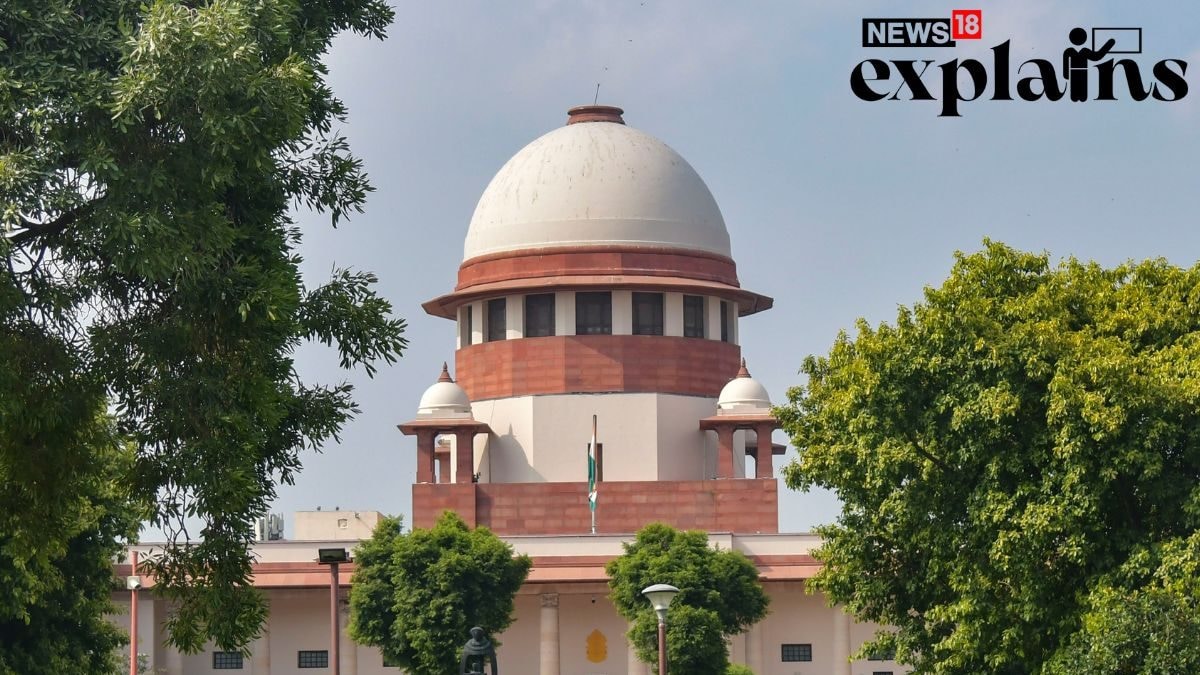The Supreme Court held that all Scheduled Castes (SCs) and Scheduled Tribes (STs) may not be “homogeneous” while examining whether states can further subdivide SCs and STs for reservation. The court cited a 2004 judgment which held that SCs are a “homogeneous” group and cannot be subdivided among themselves.
The Center, however, argued in court that it was in favor of subdividing scheduled and scheduled castes so that those who have been “discriminated” for a long time can get equal opportunities in society.
Solicitor General Tushar Mehta, representing the government, told a seven-judge Constitution bench, including Chief Justice DY Chandrachud and Justice BR Gavai: “If the object of the country and the Constitution is to provide equality, equal opportunity As well as social and economic equality, mobility of needy backward classes/castes, enabling subdivision will ensure that benefits are extended to those who are more in need of the above benefits by carefully allocating reservation quota within reserved classes. Through quota for castes/scheduled tribes Rationalization of reservation by subdivision will further ensure social justice and further enable the state to penetrate the lower strata of the backward classes.”
He added that the benefits of subdivision would ensure a “trickle-down effect” of retention.
What does the Supreme Court say?
A seven-judge Constitution bench headed by CJI Chandrachud said: “There is homogeneity in the sense that they all belong to scheduled castes. But your argument is that in sociological profile, economic development, social progress, educational progress There is no homogeneity in aspects either.
“There is heterogeneity in terms of past occupation…social status and other indicators may differ among castes within the scheduled castes. Therefore, the degree of social and economic backwardness may vary from person to person or from caste to caste.”
Main aspects of the SC subcategory
Sub-classification means the further division of a larger category into smaller categories, in this case Scheduled Castes and Scheduled Tribes, based on socio-economic status and historical disadvantage.
this madigas In Telangana, which accounts for 50% of castes in the state, community benefits have been denied to the state due to the dominance of the Mara community. Madigas has been fighting for SC subdivision since 1994. Their demands led to the formation of the Justice P Ramachandra Raju Commission in 1996 and the formation of the National Commission in 2007.
state States like Bihar, Punjab and Tamil Nadu have also tried subdividing SCs but faced legal hurdles.
this constitution Articles 341 and 342 empower the President to notify SC and ST lists, but there is no express prohibition on subdivision.
this coalition government In 2005, the former attorney general said the SC could be subdivided if there was “impeccable evidence that it was necessary”.
However, the central government’s stance on amending the constitution has been opposed by the opposition. National Commission for Scheduled Castes and Scheduled Tribesstressing that the top priority is to prioritize the distribution of programs and benefits to communities.
2004 EV Chinnaiah v. State of Andhra Pradesh
The 2004 judgment held that states have no power to amend the Scheduled Castes list to grant quotas. The Chinnaiah judgment held that any subdivision of the Scheduled Castes would violate Article 14 (right to equality) of the Constitution.
The 2004 judgment also stated that only Parliament, and not state legislatures, can exclude castes considered as scheduled castes under Article 341 of the Constitution from the presidential list.
The 1992 Indra Swahney judgment provided that the creamy layer can be subdivided or excluded to ensure that those further back in the category get the benefit of reservation. It limits quotas to 50% and says pre-orders cannot be used for promotions.
Why can’t upper castes be excluded from the quota?
Punjab Attorney General Gurminder Singh said reservation cannot be seen as a rightful act of mercy towards the poor but as compensation for centuries of oppression of the poor. He pointed out that “caste inheritance” was an issue and talked about caste-based professions.
according to hinduism, Justice BR Gavai spoke of how some families were receiving reservation benefits as a result of people entering public services. “Once a person enters IPS or IAS, his children will not suffer the adverse effects of others living in the village… but his family will benefit from the benefits of the reservation for generations,” he said, quoted hinduism.
Punjab Deputy Attorney General Shadan Farasat said caste subdivision was needed to deepen the impact of reservations to benefit the backward groups.Justice Gavai, however, held that by providing 50% reservation to backward classes, 50% of the general class was excluded, as hinduism.
Follow us on Google news ,Twitter , and Join Whatsapp Group of thelocalreport.in













